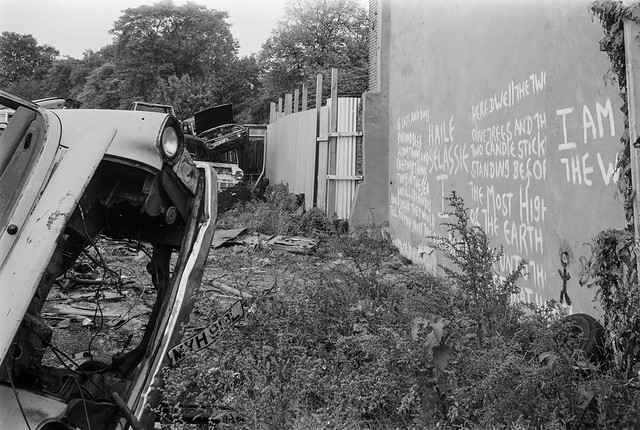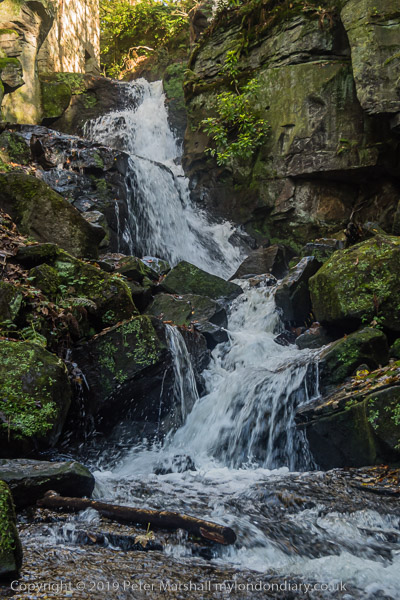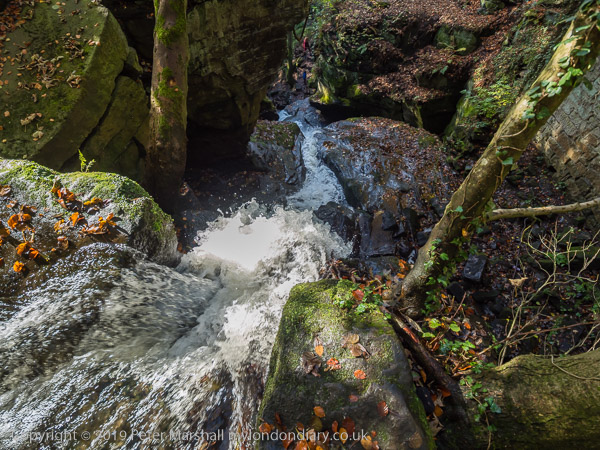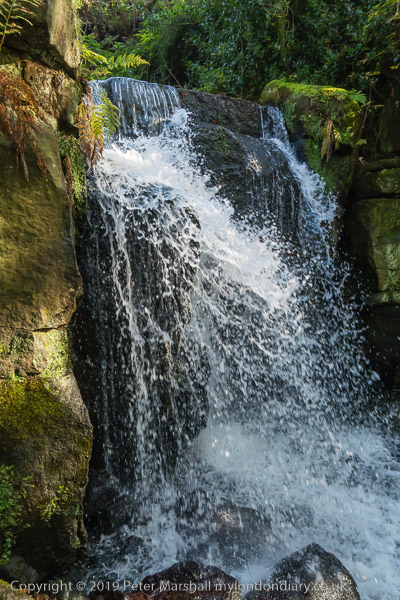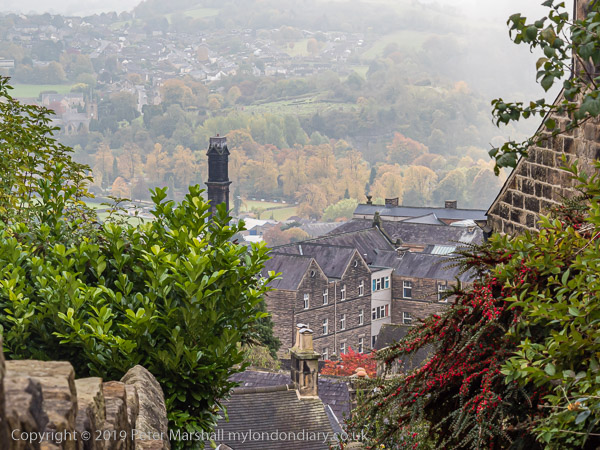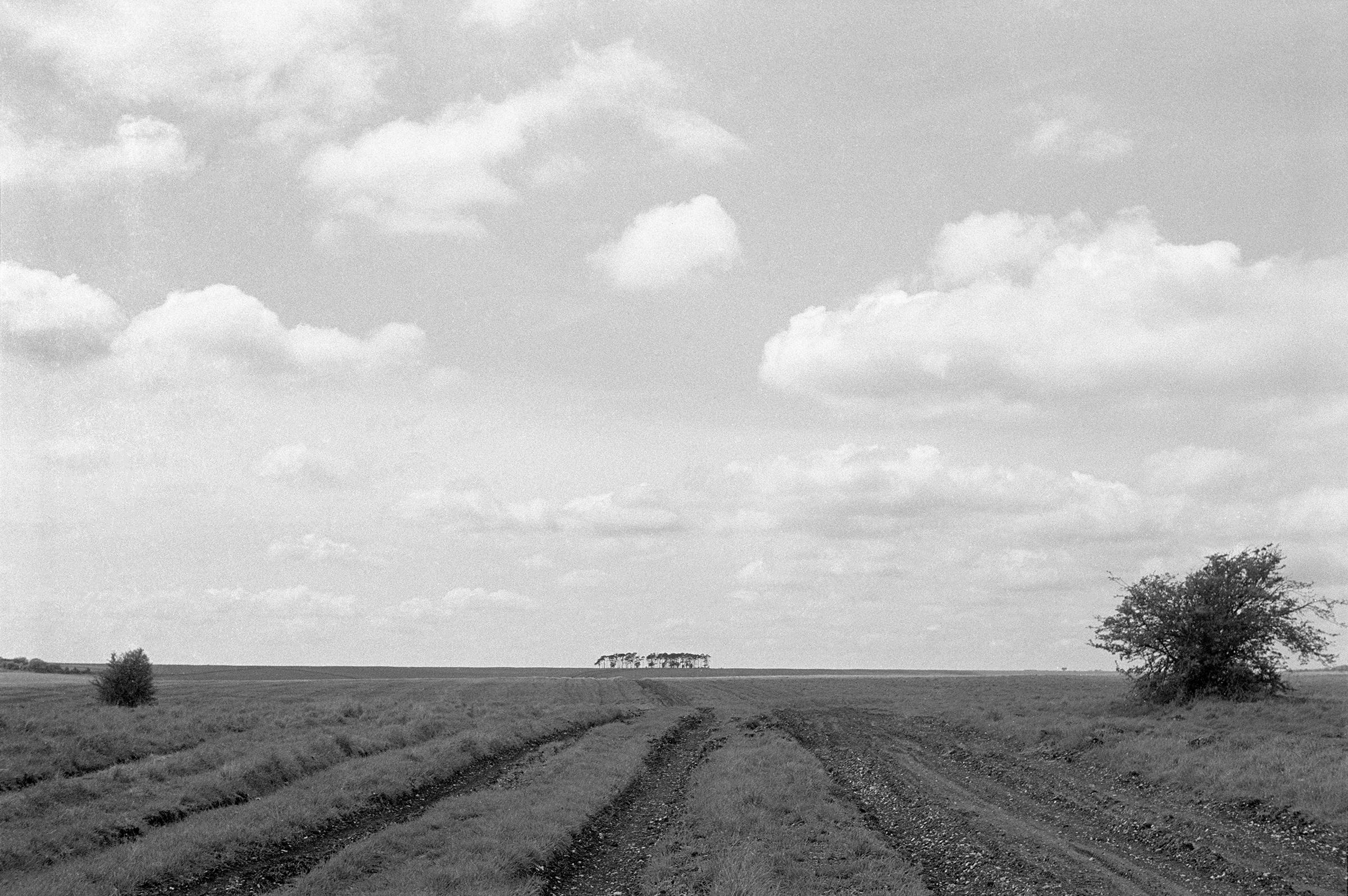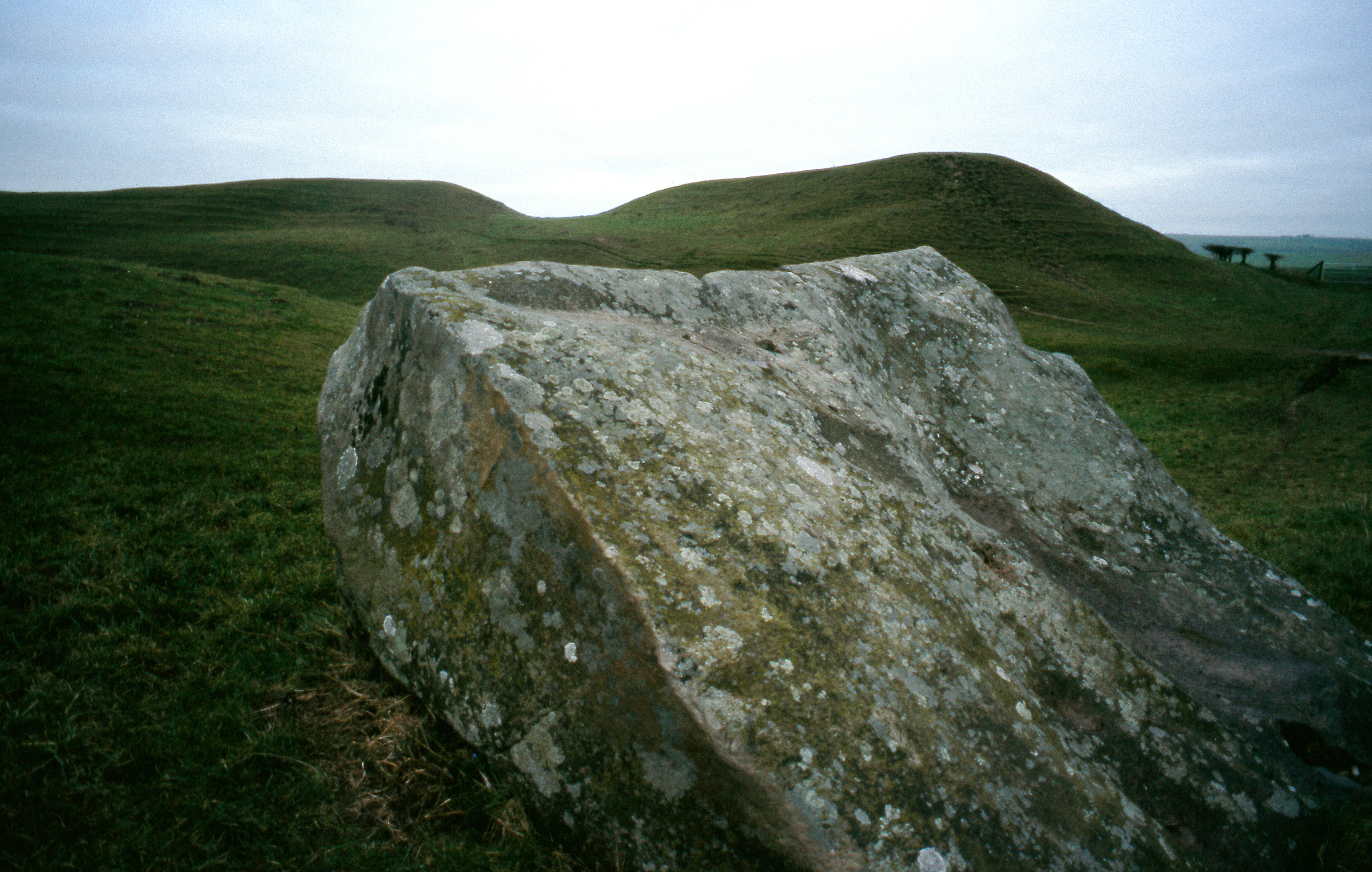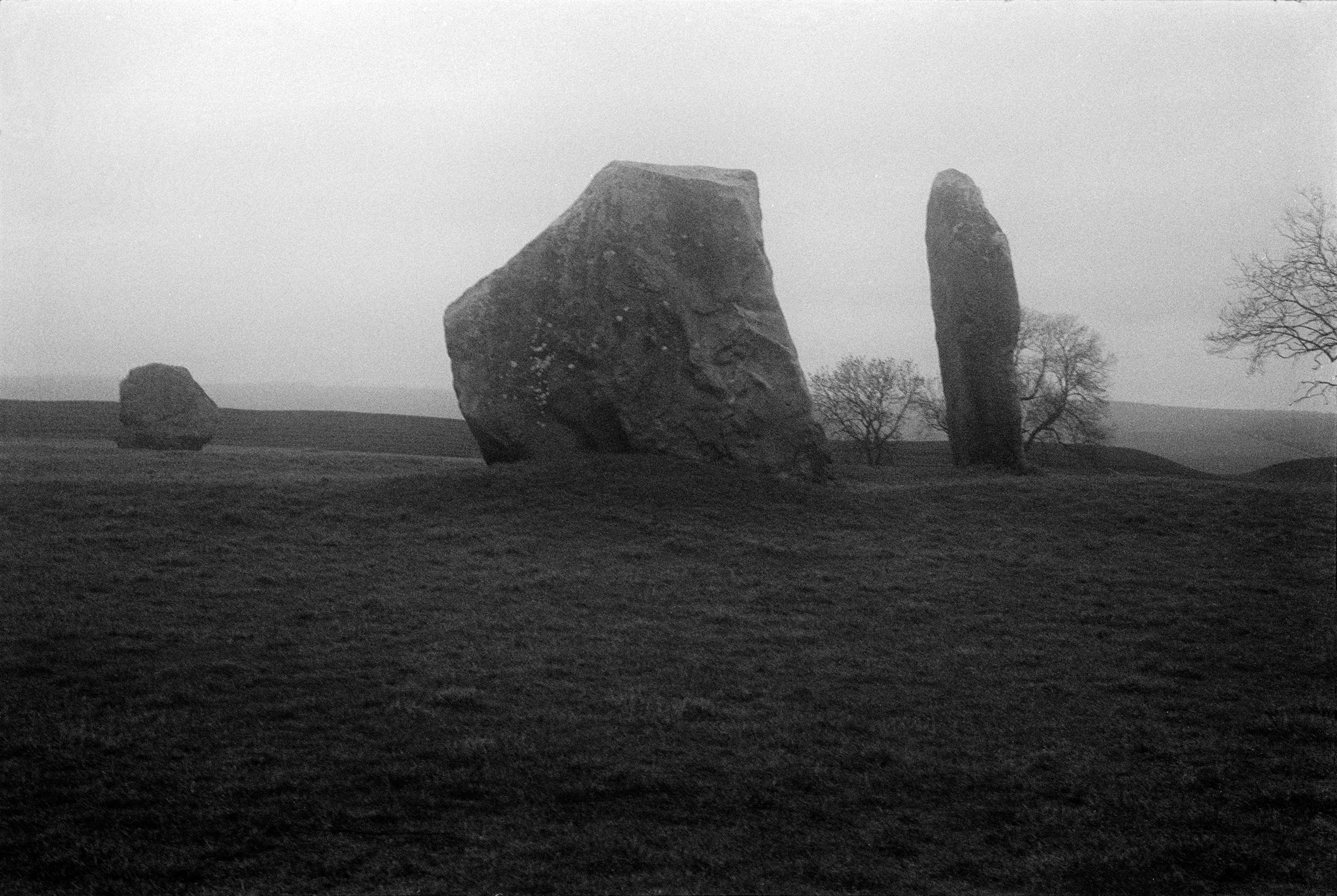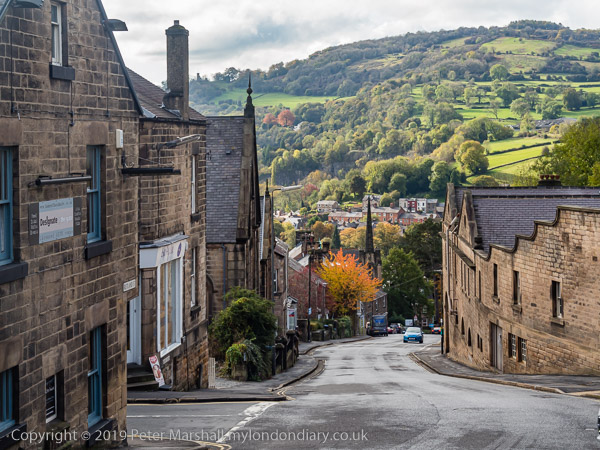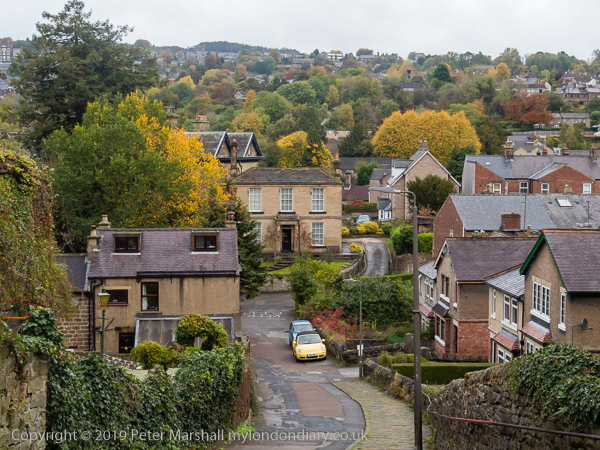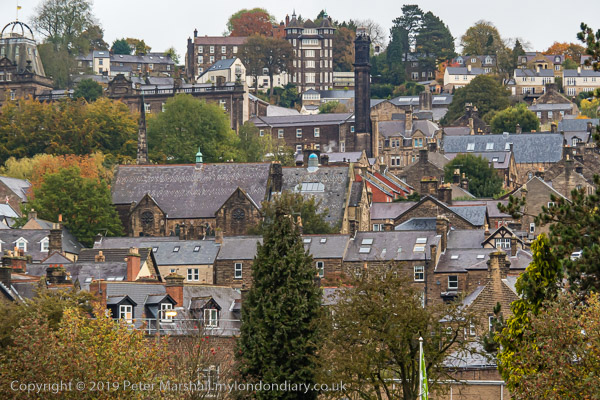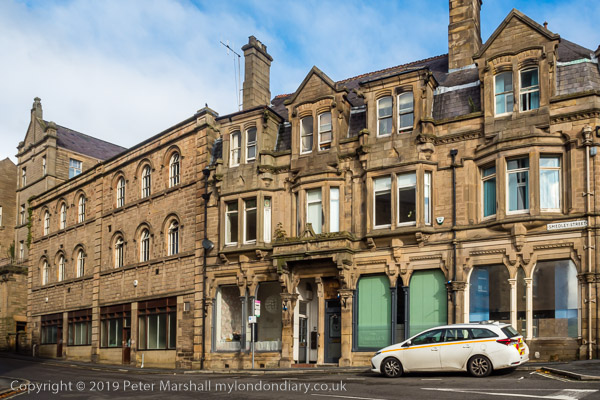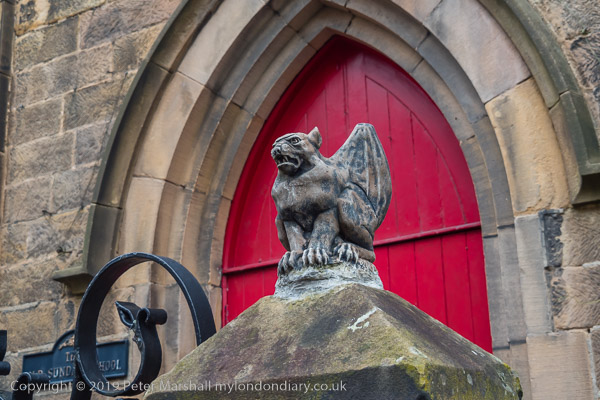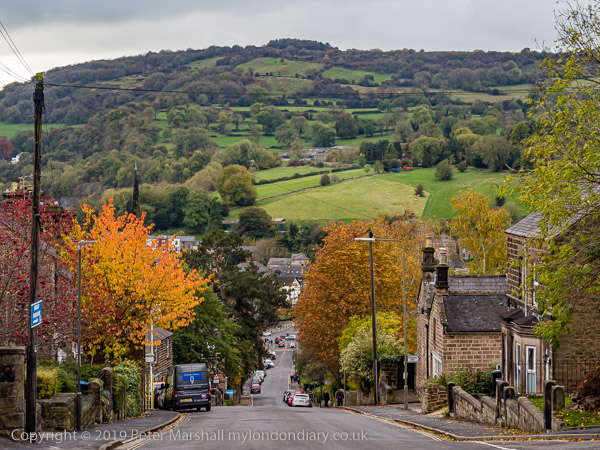The 1km wide strip of TQ32 in our National Grid includes a section of the City of London, from a little to the west of St Paul’s Cathedral to a few yards east of the Monument, with the Thames at its south and the Barbican and Moorgate at its north, a little over a square kilometre of “the square mile”, perhaps two fifths of the city. So its not surprising that I took quite a few pictures in the City during the period I was putting colour prints into the albums that make up my ‘London Cross-section’, from roughly 1986-92. Though as you will see if you look at the album TQ32 – London Cross-section, they are mainly from just a few small areas that I found of most interest. Here is just a small initial selection of them with some comments.
Walking around the City now you often find yourself going past the windows of large offices filled with people staring into screens, but back in the late 1980s and early 90s this was more of a novelty. Also something of a novelty was this pink inflatable pig on a windowsill. The real watershed for the City came in 1986, with the ‘Big Bang’, on a Monday in October that year when the City of London was deregulated, with face-to-face share dealing replaced by electronic trading. I don’t know what business this office was dealing with but the idea of pigs seemed appropriate to the getting of snouts in the trough as so many in the City found themselves in clover.
Lawrence & Co. (Estd. 1897) Ltd. were once blouse manufacturers at 7 Little Britain, a street (and area) at the edge of Smithfield, but the peeling paint and corrugated iron on this doorway seemed to me to symbolise something about the state of the nation, the larger Britain, and their was the City of London Recorder and myself also a recorder.
You can still walk along Little Britain and indentify a few of the doorways I photographed, though what is left are simply facades, and the atmosphere is largely but not entirely lost.
In 1887 prominent painter and sculptor George Frederic Watts (1817-1904) proposed the erection of a memorial to commemorate the heroic self-sacrifice of ordinary people who had died saving the lives of others as a part of the commemorations of the Golden Jubilee of Queen Victoria, but it was not taken up.
Some years later in 1898, the vicar of St Botolph’s Aldersgate suggested to Watts that the memorial could be built in Postman’s Park, the former churchyard adjoining the church and a wooden loggia was built to shelter a wall with space for 120 ceramic memorial tiles to be made by William De Morgan, though only 4 were in place when this was opened in 1900.
De Morgan gave up ceramics in 1906 after making only 24 tiles, and Watt’s widow, Mary Watts was unhappy with new tiles made by Royal Doulton, and rather lost interest. Only 53 tiles had been added by 1931 when work ceased. When I photographed it the display was in fairly poor condition, but has since been repaired and in 2009 the first new tablet was added.
I walked through the Barbican quite often and occasionally took photographs as I was involved in a group called ‘London Documentary Photographers’ which had been founded by Mike Seaborne, then curator of photographs at the Museum of London and which regularly met there, as well as organising several photography shows at the Barbican Library.
I like this picture because it encompasses so much of the history of the city of London, with a section of its Roman Wall, the tower of St Giles-without-Cripplegate, one of the few medieval churches to survive the 1666 Great Fire (though the tower dates from 1682 and the church was reconstructed after being gutted by bombing in the Blitz of 1940) as well as the taller tower from the Barbican Estate, built between 1965 and 1976 on an area devastated in the war.
Shakespeare, on this plinth in St Mary Aldermanbury Garden, Love Lane is another reminder of the city’s history – as is the garden. The church here was destroyed in the Great Fire and rebuilt shortly after to the plans of Sir Christopher Wren. It was gutted again during the Blitz in 1940, leaving only the walls standing. In 1966 these were shipped to Fulton, Missour and restored as a memorial to Winston Churchill’s ‘Iron Curtain’ speech in that town in 1946.
The area was laid out as a public garden after it was acquired by the City of London in 1970 and is often quite full at lunchtime with city workers eating their sandwiches.
Shakespeare’s bust, by Charles Allen (1862 – 1956), is part of a memorial from 1896 to John Heminge and Henry Condell, fellow actors of Shakespeare who after his death in 1616 collected his works and published them at their own expense in 1623, thus making them available to later generations. Without them his work would have lost.
All photographs on this and my other sites, unless otherwise stated, are taken by and copyright of Peter Marshall, and are available for reproduction or can be bought as prints.


































